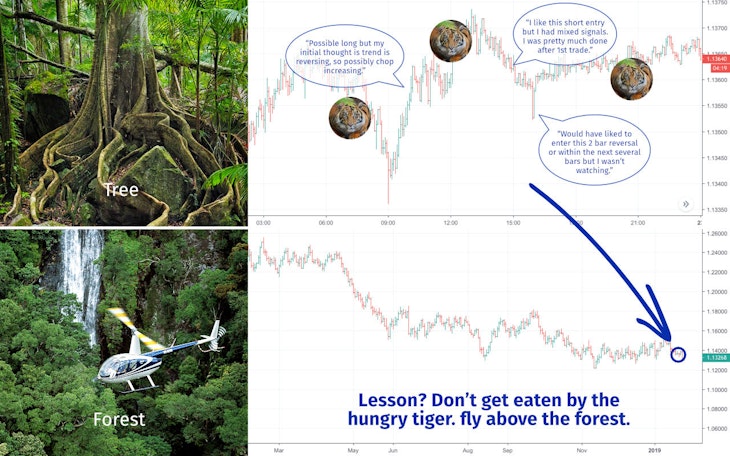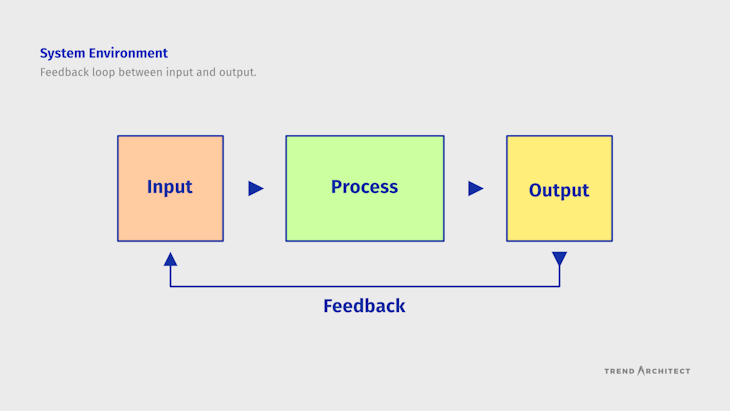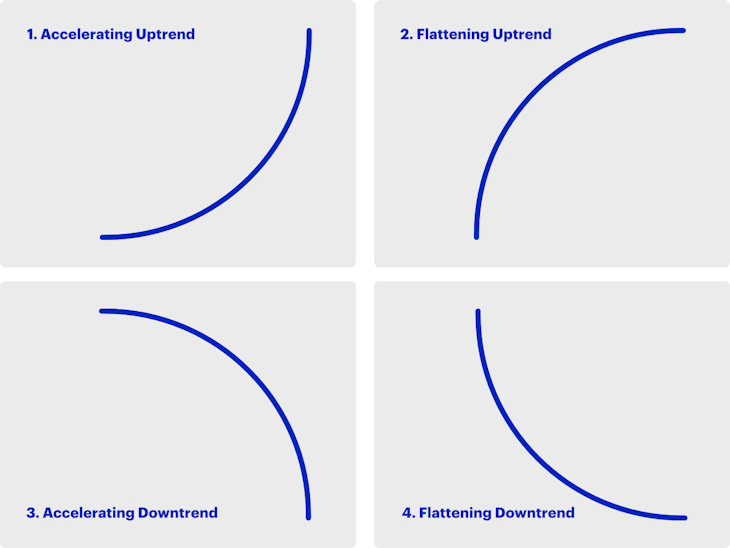Trend Trading Is Like Making Great Cappuccino
Successful trend trading is tough. To master a skill that is as hard as trend trading, use of systems thinking to dramatically boost your chance of success.
I bought an espresso machine and a coffee bean grinder last summer but I still fail at making a superb cup of cappuccino.
There’s always something unsatisfying about the drip. It tastes watered-down, acidic, or the milk froth doesn’t reach a silky texture. My barista skills aren’t living up to the semi-professional machines yet. Occasionally I would get so frustrated that I scour the internet for hours to collect ideas for the next morning and grind through bags of beans. When I asked friends for tips, we realized that they’ve also been doing it all wrong.
Why am I telling you this? Because the struggle reminds me of my learning curve in trend trading. I would sit for hours on end devouring charts and reviewing trades.
After 14 years of doing it, trend trading funds a comfortable lifestyle and expensive toys like this espresso machine. I’ll share with you what worked for me.
Anyone can become consistently profitable with a little bit of perseverance.
Trend Trading Success Requires Systems Thinking
Trend trading is more than just trading for profit. It’s an artwork that never reaches perfection. Certain types of traders are naturally attracted to trend trading because there’s a pursuit of excellence involved that gets borderline philosophical.
It’s about being in sync with the market. You want to get deep down to the true nature of price action, not trade arbitrary chart patterns or look at confusing indicators. You want to differentiate sustainable momentum from random gyrations.

When I pursued trend trading, I was inevitably engaging in systems thinking. We’re a natural talent when it comes to this because our brains are hardwired to learn. Systems thinking is a holistic approach that focuses on the interrelation of a system’s components to improve an output over time.
An example: You place a trade and either end up with a gain or a loss. You analyze the outcome and see where you can improve — a classic feedback loop of a learning process.
Just like how I’m dialing between fine and coarse grinding to optimize a coffee’s taste, I optimize trades towards the highest reward at the lowest risk.

Over time, memory becomes a useful tool in systems thinking. It is a past’s guide to the future. If you remember how a trade failed and you can figure out why, then you can try to avoid a similar failure from happening again. That’s the purpose of memory. It’s not to remember the past but to stop the damn mistake from happening in the future.
A huge revelation for me was to tie a trade’s exit with an entry in the opposite direction (basically a reversal order). For the longest time, I couldn’t figure out where the ideal exit is. Exits and entries are inextricably connected. If you plan to close your long position, you must go short. If you plan to close your short position, you must go long. That way you can eliminate random exits and ensure more accurate entries. You also stick to a trend until it’s absolutely invalidated. Time in the market beats timing the market, as the saying goes.
You will establish your own set of trading rules eventually. Aim for system that works like a well-oiled machine that avoids previous mistakes and guarantees an edge.
Similar to a pilot running down a checklist that is a result of best practices gathered by the industry over decades. If you place random trades, you’ll get random results and there’s nothing you can learn from. You have no system and are probably just seeking thrills.
Overcoming Lack of Progress
There will be phases where you’re doing it all wrong without even realizing it. New insights may disrupt your existing trading rules, but they will help you build an even better system.
Make printouts of your trades. Annotate what went wrong and what went right. Recall particularly how you felt at that time because emotions ultimately drive our decisions. If you can establish a healthy feedback loop for monitoring your emotions, you should quickly get hold of them and make better trading decisions in real-time.
Tracking your progress will lead to new revelations. Such revelations come to you randomly. You may work on a different project and learn something that you can relate back to trading.
You must approach trend trading with a mindset geared towards continuous improvement. The Japanese have a word for that: It’s kaizen which translates to ‘change for the better’. Excellence takes time and dedication.
If you’re the type who gives up easily, revelations that propel you further by leaps and bounds won’t ever cross your mind.
Experiment Based On New Theories
When I made $110,340 in the Chinese stock market 6 years ago, I started with a vague theory on parabolic curves. It’s how I envisioned the flow of money, like kinetic energy of an object that keeps it in motion.
Price action is merely the spiraling around a parabolic curve on the way up or down. The trend can accelerate and decelerate over time which is why there are 4 types of parabolic curves (2 for uptrends, 2 for downtrends). They make price action predictable to a certain degree because you can project it into the foreseeable future.

I had no idea whether my theory would work, but I saw how it did over and over historically. So I tested it at the first chance and it worked. I could now repeat these tactics in smaller time frames.
Several other components constitute my trend trading system now. Each took years of refining. Whichever component requires refining, the overall goal is to upkeep consistency. Get onto the path of kaizen and soon enough you’ll start to see meaningful progress.
Here’s a rule to test if you have reached perfection according to Roman Stoic philosopher Lucius Annaeus Seneca:
You will come to your own when you shall understand that those whom the world calls fortunate are really the most unfortunate of all.
Lucius Annaeus Seneca
Matt Hagemann
June 4, 2021